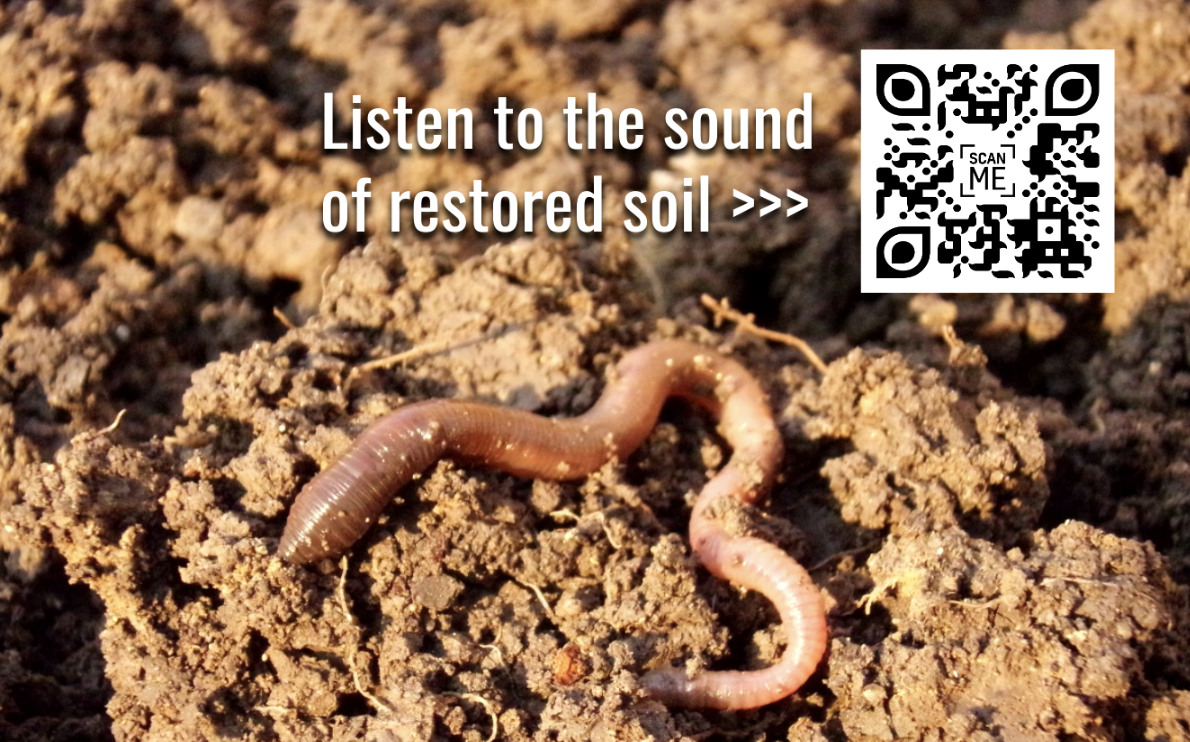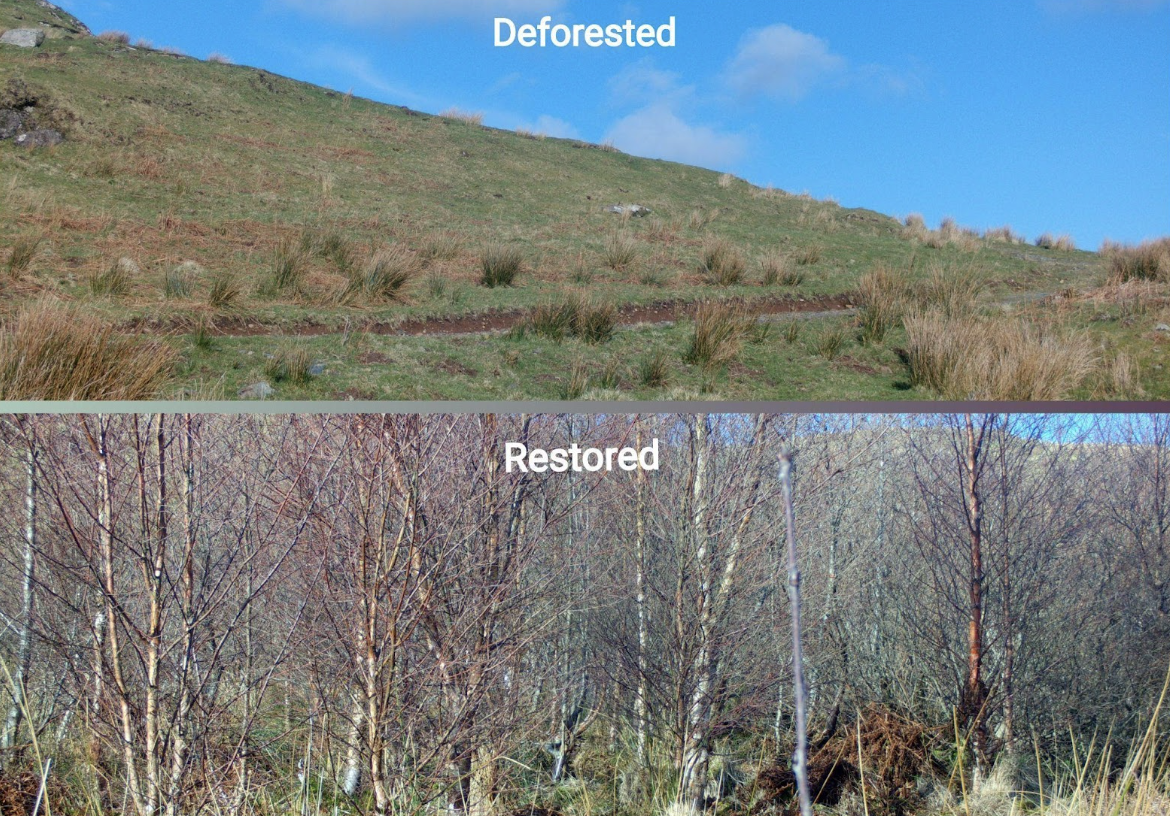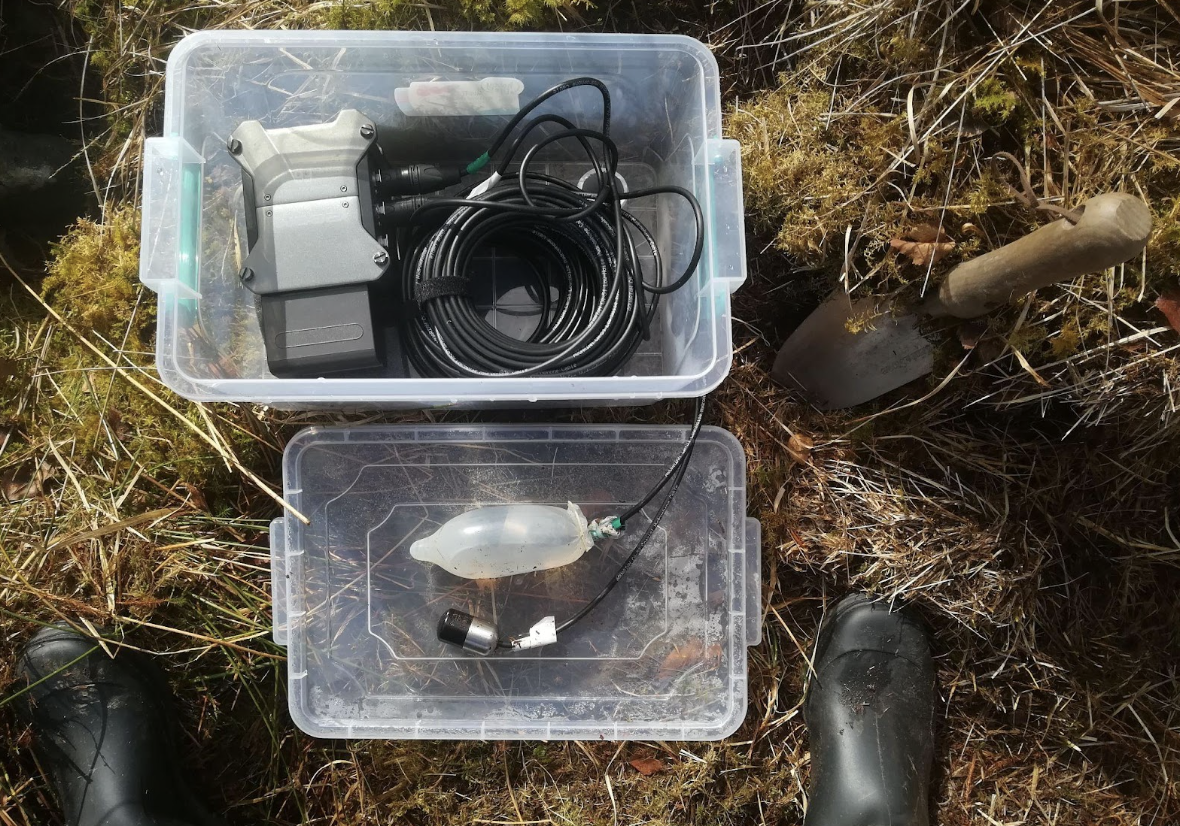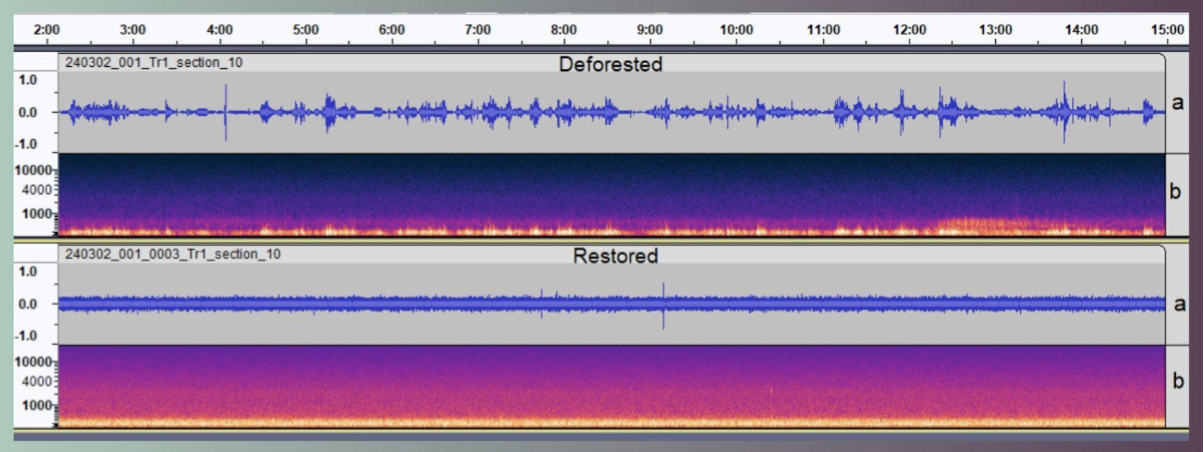The sound of restored soil:
potential application of ecoacustics for soil biodiversity assessment

Behind its placid appearance, Kilchoan teems with life: unfolding its beauty before your eyes, reverberating through the lush vegetation, revealing itself only in elusive traces, and weaving intricate threads deep underground. Underneath our feet lies a bustling ecosystem: approximately 25% of all Earth’s species reside within the soil matrix, playing a key role in many processes foundational to all life forms on the surface.
Despite their importance, belowground faunal communities remain considerably understudied. Only recently have ecologists begun to recognise the crucial role of soil in the successful restoration of degraded sites, prompting the need for broad-scale soil biodiversity appraisal and monitoring. Ecoacoustics offers a potential solution to bridge these knowledge gaps, yet the complex and dynamic nature of soil systems poses many challenges.
Here, the Acoustic Complexity Index (ACI) and Acoustic Diversity Index (ADI) were employed to explore the soil soundscape of a restored rainforest and a deforested site (Fig.1), aiming to investigate how these indices reflect habitat differences and correlate with biotic and abiotic components of the soil matrix.

THE PROJECT
During the three weeks spent at the Estate in March 2024, over 48 holes were dug, nearly 400 hours of recordings were taken, and 24 soil samples were collected for traditional invertebrate counting and physicochemical analysis (Fig.2). A considerable effort, fully rewarded by the breathtaking vista of Loch Melfort stretching out below from the hilltop.

RESULTS
Spectral and statistical analyses showed promising yet mixed results in the performance of acoustic indices.
Overall, the restored site exhibited a more diverse but less complex acoustic profile (> ADI), significantly associated with a wider variety of signalling species. Conversely, the deforested site was characterised by greater variability in sound patterns, resulting in higher complexity (ACI) regardless of soil invertebrate diversity (Fig. 3). The correlations of acoustic complexity with soil water and organic matter content also hinted at the influence of soil characteristics when assessing soil soundscapes.

These findings underscore the importance of employing multiple acoustic metrics within the same study to fully capture the diversity, functionality, and quality of a habitat, emphasising the need for further research to improve their understanding and applicability.
Listening to what the soil of Kilchoan had to say was a privilege. Just as it was to be the first student, alongside my coursemate Ebba, representing the Edinburgh Napier University here. I am deeply grateful to The Kilchoan Melfort Trust, especially Luke Senior, Laura Dawson, Robin Stephen, and the landowners, for granting access to this magnificent Estate and making us feel exceptionally welcome.
